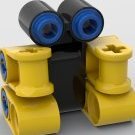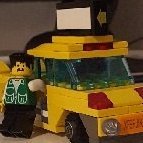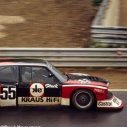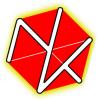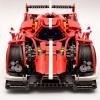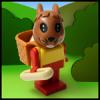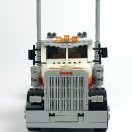Search the Community
Showing results for tags 'car'.
Found 718 results
-
I've been split in scale since I began building LEGO trains with all my shunters, freight wagons and latest passenger train being 7-wide or 1:54 and all my older locomotives and passenger wagons being 6-wide or 1:60. With almost all of my buildings close to true minifig-scale, I've been contemplating to unify my scale for a few years now but I couldn't decide to go for either 7 or 8-wide...in addition to being pretty much satisfied with most of my 6-wide models as they are. Well, no more Presenting my favourite Danish State Railways’ (DSB) locomotive redesigned to 8-wide and digitally rendered in two versions and liveries... DSB Litra MZ The powerful Litra MZ locomotives were built by Swedish Nydquist & Holm AB (Nohab) and Danish subcontractors on license from General Motors. 10 MZ (I) were built from 1967-1969. 20 MZ (III) were built from 1972-1974. 61 in total were built across all four variants (I-IV). Quite a few are still used today by private railway companies either domestic or abroad, in Iran, Norway and Australia. My model of DSB Litra MZ (I): DSB maroon livery used in the 1960/70s with the highly recognizable crown and wing logo on the front. Scale: 1:46 Length: 56 studs from buffer to buffer Width: 8 bricks Bricks: 1.264 Powered: 2 x L-motors, 2 x AAA battery boxes + 2 x SBricks, 1 x AAA battery box + 1 x SBrick/PFx Brick or 2 x BuWizz battery boxes Control: PF with SBrick, PFx Brick or BuWizz Designed: 2020 My older 6-wide version from 2016: https://www.eurobricks.com/forum/index.php?/forums/topic/119474-moc-the-danish-state-railways-dsb-locomotive-litra-mz-i/ All renders are done on the very high setting in Stud.io with all of my own custom decals added in the PartDesigner tool. Upgearing from 20 to 12 teeth with a ratio of 5:3....more speed, less power PF L-motor design with good advice from some of the Brick Train Depot guys. Credit to Duq for coming up with the original idea of using the T-piece. 3-axled bogie: The center wheel will utilize a black hockey puck as a blind driver or a 2 x 2 round tile with open stud and 1 x 1 round tile placed on top on it as the alternative. https://www.bricklink.com/v2/catalog/catalogitem.page?P=47576#T=C My model of DSB Litra MZ (III): DSB "modern" red & black livery used in the 1980s. Scale: 1:46 Length: 56 studs from buffer to buffer Width: 8 bricks Bricks: 1.331 Powered: 2 x L-motors, 2 x AAA battery boxes + 2 x SBricks, 1 x AAA battery box + 1 x SBrick/PFx Brick or 2 x BuWizz battery boxes Control: PF with SBrick, PFx Brick or BuWizz Designed: 2020 My older 6-wide version from 2011 and redesigned in 2015: https://www.eurobricks.com/forum/index.php?/forums/topic/172599-moc-herningværket-vestkraft-is-complete-set-of-locomotives-and-wagons Part of the fun and what set LEGO trains apart from pure model railroading is the inclusion of minifigs, so whenever and whatever I always try to make space for them and also keep on some play features and interiors. The 8-wide body is quite roomy and has a fairly correct interior. 2 x PF L-motors with either 2 x AAA battery boxes + 2 x SBricks, 1 x AAA battery box + 1 x SBrick/PFx Brick or 2 x BuWizz battery boxes can be utilized: Both locomotives with DSB Litra MZ (I) in front of the later version DSB Litra MZ (III) in the background: Technical addendum: For the first time ever I have used technical drawings overlayed with LEGO scaled grids to get the dimensions right or as close to right as possible. The models haven't been built yet but some smaller builds have been used for testing during the design phase. My slightly shorter test train didn’t really like driving through R40 curves, no surprise there Too much length overall and the wheel sets in both ends of the bogies are also pretty far from each other producing some drag. Going through isn't impossible though but rather uneven and a tiny bit struggling, especially with added wagons. There are no problems driving on straight tracks and through larger radii curves. To my surprise however was the finding that the total number of parts were the same or even slightly less than a similar 7-wide model So henceforth, 8-wide it is
-
Hello everybody! This is the first MOC I present on Eurobricks. My most popular MOC yet is the 3 speed auto gearbox (https://rebrickable.com/mocs/MOC-33711/lbrix/3-speed-auto-gearbox-overworked-version/?inventory=1#comments). But now to this gearbox: At first ask yourself this question: Which sense has a normal D-N-R gearbox in a manual technic car? It has no sense. It makes no difference if you are in the forward gear or in te reserve. But with this D-N-R gearbox it makes a difference, because if you are in the forward gear, you can not push the car backward and if you switch in the reserve gear, you can not push the car forward. If you want to build this gearbox into a technic car, you have to connect the grey connectors to the wheels and one of the black ones to the fake engine. For more information check out this MOC on rebrickable (maybe it is not approved yet): https://rebrickable.com/mocs/MOC-47985/lbrix/alternative-d-n-r-gearbox/?inventory=1#comments No I wanted to ask you, what you think about this D-N-R gearbox? Here is an video of my gearbox:
-
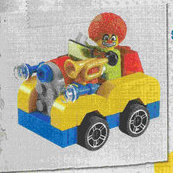
Need help on "reverse-engineering" part of a model without instructions
Transparency for Effect posted a topic in Special LEGO Themes
I'm trying to recreate the one model made in the LEGO Club Magazine for the first series of Collectable Minfigures that didn't come with instructions in 2010; the Clown car. I've basically been recreating it in LDD and so far the one area I'm having issue in is the round front section with the blue stud. The car looks like it uses this mudguard, but whatever the front rounded plate with the blue stud is connected to seems to collide with the studs of said mudguard and can't be placed down flat, meaning it may not be the same but red rounded plates. That or it's connected to a hinge piece at the back to "drape" over part of the car at an angle, but would there be enough stud space to do that length wise? It could also just be a matter of what's connected to the grey piece and the answer not being the same, rounded plate, but it does look like it's rounded like the front piece and I'm not sure of other similarly rounded pieces that are shorter to accomodate for the mudguard studs and still connect to the rest of car through SNOT. TLDR; I'm bewildered by the construction of the SNOT-based, blue/grey/red middle front section of the car and wonder if anyone here could take a crack at it. EDIT: Here's a link to the image I took from that might be slightly better quality: http://www.brickshelf.com/cgi-bin/gallery.cgi?i=4642125 -
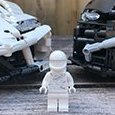
[MOC] 1:10 Aston Martin Vantage AMR
Jerry LEGO Creations posted a topic in LEGO Technic, Mindstorms, Model Team and Scale Modeling
Hi all! I wanted to share my newest creation with you: It is an Aston Martin Vantage AMR, built in a 1:10 scale. For more images, see: BrickSafe. I started building this model in May last year, and after a lot of building, rebuilding and some breaks, it is finally finished. I wanted this car to be have more functions than my previous one, the Lamborghini, while also building it more rigid. Both of those requirements were met :) It comes with the following features: Custom V8 4 Speed realistic manual gearbox Suspension with anti-rollbars on all wheels Working steering Openable doors, bonnet and trunk Lockable doors Adjustable seats Detailed interior I'm really happy with how the gearbox turned out. It runs without much friction, even in first gear. I would like to hear your feedback, so I know where to improve on my next MOC. If you want to see more about the gearbox, door locks or seats, progress on the car, please check out the following links: Gearbox Door locks WIP Seats If you have any questions, feel free to ask me :) ~Jerry LEGO creations -
I always like to mess around with existing LEGO sets, especially with set 3177 (a.k.a small car). So I discovered a BMW M4 with a trailer made from another BMW M4 cut in half. I used that idea to make this thing:
-
Hello everybody, please go check out my new Lego Idea for Lilo & Stitch's beach house! https://ideas.lego.com/projects/708b8674-23e8-4a23-b847-b3d8d1fbfc00 It's one of the best Disney shows ever and I would love it to become a set! I appreciate your support :)
-
This is my entry for @truncate_mocs' build-off contest on Instagram. The front shares the same technique as my Aventador moc, while the sides are exactly same as the 2020 SC Huracan set. Pleased to have completed this, because this is one of my toughest builds to date, lots of trials & failures on the front end. Thanks for viewing! KMP
-
- moc
- speed champions
-
(and 3 more)
Tagged with:
-
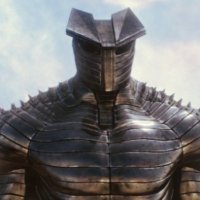
[MOC] HONDA ACTY 1983 Dragster [2020]
Michael217 posted a topic in LEGO Technic, Mindstorms, Model Team and Scale Modeling
HONDA ACTY 1983 Dragster The inspiration for creating such an unusual hybrid was the car of a blogger from YouTube) Description: -1 Buggy motor -Servo motor for steering and steering wheel -Small power supply -Detailed interior All the photos on the link: https://bricksafe.com/pages/Michael217/honda-acty-1983 Instagram: https://www.instagram.com/lego_muscle_garage/ Join my group in VK: https://vk.com/legomusclegarage -
So here I have a few cars and trucks that I have collected. I do have aircraft but they are tucked away somewhere safe for the time being. (currently moving place so prepareing stuff for that) Hope you enjoy.
-
After my 2 pick-up alternates, I returned to set 10265 twice more but this time to create 2 vehicles heavily inspired by iconic and classic sportscars from the 1960's in which Ford also played a key role, the GT40 and the Shelby Cobra which both fit perfectly with the 1967 Mustang. First the GT40 famous for winning Lemans. The GT40 was first built in England, but the later version in the US. GT04 main by Nathanael Kuipers, on Flickr The model features working steering wheel, opening doors, and engine cover with an engine that can be removed and displayed separately. GT04 open by Nathanael Kuipers, on Flickr Next is the Cobra Roadster, also a car that originated in the UK, but which Shelby with the help of Ford imported to the US. There it was equipped with a much larger engine that also required other changes to the chassis and suspension. I built this specific model for the TLCB Lock-down competition Cobra Roadster by Nathanael Kuipers, on Flickr This was a tricky model to render in bricks due to all its curves. Cobra Roadster rear by Nathanael Kuipers, on Flickr As with the GT40, this model features a working steering wheel and opening doors. Both front and rear open too. Cobra Roadster open by Nathanael Kuipers, on Flickr If you're interested to read more about the development or would like to see more pictures of either vehicle, please consider to have a look at my website NKubate.com. Thanks for looking!
-
Hey, Here's my attempt at an 8L Aston Martin Vulcan. It's been a blast recreating all those complex shapes, from the mouth to the spoiler. As a bonus, you can fit TWO whole minifigs in that model, where some of the recent cars in the Speed Champions Line can't even fit one... I've built it with real bricks but i'm still missing 40ish pieces in the right color. The inverted 1x2 curved slopes in blue just got released in a Minions set. And that canopy doesn't exist without a print... For now. Thanks for reading !
- 2 replies
-
- 8l
- speed champions
-
(and 3 more)
Tagged with:
-
A little fortunate to have found this front grille solution, was sorting bricks and that part inspired me. Mixed feelings on the binoculars as exhaust pipes, it seems too glaring and a little too big. Overall it looks more like a G30 5series actually, but I'm glad to have checked this off my bucket list. Thanks for viewing! KMP
- 1 reply
-
- speed champions
- car
- (and 4 more)
-
This is my own creation of a Mercedes-Benz G550 4x4² SUV. Check out my Rebrickable post for instructions which you can download for free: https://rebrickable.com/mocs/MOC-43865/BrickHugger171/mercedes-benz-g550-4x42/?inventory=1#comments
-
Hello! I want ot share my car models. Previously designed trucks and cars 4pin wide, I thought that the truck should be wider than the car - whitch means 5pin, since 6pin - its too much :) 4pin trucks can be seen here p.s. If I made a mistake in the section - please forgive me and move the topic to the ride one. Thank you for the attention! Next trucks ( Which is betten - add new models in the first (main) post or in the following comments? ) My topics: micro city + micro village
-

[MOC] 1969 Mercedes-Benz 280SL
Hass Kabal posted a topic in LEGO Technic, Mindstorms, Model Team and Scale Modeling
Hello to everyone, I am here with the new Lego MOC - 1969 Mercedes-Benz 280SL. I revised a few of the original designs. Some of the important ones are that the side mirrors continue without breaking the oval line at the place where the door exits. Updating the engine as 6 cylinders. Just like the upper part of the hood looks more smoothly oval, with more smooth lines. Please do not withhold your vote on the ideas below link if you like https://ideas.lego.com/projects/91827469-0cb7-4029-98e8-14e1a01af1f4 For all photos, you can check my flickr address. https://www.flickr.com/photos/hasskabal/albums/72157713991355321 Thanks Everyone, -
It's been four years since the last classic European car graced the CREATOR range, and I said then I'd be delighted to see more of them. Since then we've seen the handsome Mustang and the sleek Aston Martin DB5 - technically a European classic car but I haven't counted that one! The range's latest offering, the Fiat Nuova 500 ('Cinquecento'), fits neatly into the category of small cute classics previously epitomised by 2014's 10242 Mini Cooper and 2016's 10252 VW Beetle. I was delighted to see the widespread use of a rarer colour (dark azure) in the Beetle; now Bright Light Yellow takes centre stage for the Italian classic. The Fiat 'Nuova' 500 was launched in 1957 as a successor to the 500 Topolino and was designed as an inexpensive, practical city car with a rear-mounted engine following the style of the successful Beetle. Its 479 cc engine boasted a stunning 13 horsepower (my lawnmower is 430 cc). Just short of 4 million were produced until the model was succeeded by the Fiat 126 in 1975. Earlier models featured rear-hinged 'suicide' doors; these were replaced with conventional front-hinged doors with the release of the 500F in 1965. Review: 10271 CREATOR Fiat Nuova 500 Parts: 960 Price: £74.99 | $89.99 | €79,99 | AU$139.99 Like the Beetle and Mini, the LEGO Fiat no steering, but aims at a realistic body for display with authentic features. Coming in at the same price as the VW Beetle (in the UK; the latter is pricier in most regions), the Fiat consists of over 200 fewer parts. Let's see if that price hike is worth it. Box I confess that at first glance at the box i thought this set was ordinary LEGO yellow, and it was only in looking at the little painting on the box that I noticed the paler tones of Bright Light Yellow - it's particularly noticeable when you compare to the yellow round tile on the artist's palette. The box art mimics approximately the scene of the painting, with the car posed attractively in front of Rome's iconic Flavian Amphitheatre, or Colosseum. I was disappointed not to see a tiny easel in the painting. Some lens flare adds sparkle. Cobbled streets abound. The box rear shows off the car's attractive rump, along with the set's other features which exceed the bounds of their respective insets. The car stands out beautifully in the otherwise nondescript and unidentified back street; a pronounced sepia filter provides a warm which contrasts but complements the dark blue of the CREATOR Expert range box trim. Sadly, thumb tabs are the designated means of opening - disappointing for an adult-oriented set such as this. I am pleased to see some schematics along with real set reference images on the box top: This saves me the job of sourcing my own reference images! They've even produced a LEGO schematic. The box contains some nine polybags - three modules with three bags each, the instructions, and a separately-packaged fabric part, which you can see here. Instructions The manual comes in a separate polybag which also contains the sticker sheet. There's no cardboard backing but the wrapping has in my case done a good job of preserving the booklet. I love this! The square manual evokes an old Polaroid photograph, and if that weren't obvious enough there's a rotated panel within the picture like a photo within a photo. The faded colours and dress provide the perfect 60s vibe and (even though I'm not that old) have me pining for family holidays long-since passed. Interestingly the car featured in the picture is an older model with rear-hinged doors. I think this is the first time I've encountered a LEGO instruction manual that doesn't feature the set on the cover. A downside to the cute square booklet is that it doesn't stay open, and I wasn't about to go breaking the perfect-bound spine just for the sake of some photos. The instructions are clear against a duck-egg blue background, with suitable callouts, and extra guidance for the few tricky bits. Some four double-pages at the front provide some interesting history into the car and the FIAT company. I'm a big fan of these educational instructions - what a fabulous way to preserve our cultural heritage. Also in the instruction pack is one of the prettiest sticker sheets I've ever encountered. The decals for the car are reasonably easy to apply, though the smaller square ones all go onto curved parts. They are well colour-matched. The 5x5 square painting is gorgeous. As is customary, a variety of nationalities are featured in the car registrations. The Danish (DK) and German (PN) plates both feature the set number formatted to a realistic registration number (although in Denmark, 10.xxx numbers were for motorcycles I believe). PN is not an obscure region of Germany but instead refers to the set designer Pierre Normandin. The Italian plate is worthy of note. 'TO' is the area code for Turin (Torino; the 'T' in FIAT and the firm's city of origin); 'F01965' can only refer to the 500F model which was released in 1965 and was the first to feature front-hinged doors, as does the LEGO version. Parts The three modules' parts are shown in the thumbnails below: click the pictures to see larger versions. I didn't identify any new moulds in this collection, but the headline is the shear number of parts appearing for the first time in bright light yellow. This colour has been in the ascendency for a few years, featuring for example as panels and bricks in Friends sets, or as the secondary colour of the new livery of the CITY fire sets, but I have not previously encountered such a fine spread. This extends too to the SNOT parts; there are SNOT brackets and bricks of various conformations all in BLY - contrast the Beetle whose extensive SNOT pieces were for most part grey. Otherwise, the 10x4x1 windscreen and the 4x2 2/3x1 trans-clear curved bricks are found only in the Old Trafford set, and there are three (one spare) 1x1 round tiles with a lovely FIAT logo - see later. The four medium dark flesh arms-with-pins in the centre photo took me a while to identify; they are originally Nexo Knight parts found more recently as ice cream cone limbs. Build I won't go through this exhaustively; instead I'll just try to give you a feel for the build and highlight some interesting bits. We join here fairly early in module 1. Of some interest is the construction of the chassis: In the centre are dark grey 2x4 plates with pins on each side, usually used as wheel axles, here connecting to the technic beams on either side. The centre beams are connected to the outer beams and the black 2x2 plates with technic hole via 3L pins. The result is a strong floorpan only a brick high. The underside is reinforced; see here. The rear bumper and lights is attached via SNOT plates, and also unusually with the 2x3 clippy-tile. I remain uncertain of the purpose of the two blue stud-pins on either side of each end of the chassis; they serve no apparent purpose except possibly to help put the axles into the right holes. If that's the case, I can't help but feel a little patronised. Next we build up the rear, at the start of Module 2. You get to see how the wings are attached at a slant using hinge-plates in a technique that will be familiar to anyone who has ever built an X-wing. See here for a part-assembled view. Above these slanted sections, SNOT-attached curved plates help define the car's double-curvature. Note the small 2x2 with corner cutaway, which attaches solely to the single stud of the grey headlight brick you can see mounted on its side - it's next to the turquoise brick if not immediately obvious. I always like headlight bricks used this way. You can also see the gearstick and handbrake, along with the bars to which the chairs will be attached. Up till now the build has been enjoyable, without being especially challenging. It starts to go up a gear at this point. r The dashboard section is a SNOTty conundrum that requires a bit of mental gymnastics to keep oriented correctly. This is made harder by the fact that a sticker needs to applied to one of the inverted 2x2 curved plates, seen here at the base of the dashboard but will face to the rear of the car when mounted - and it will be all too easy to set it upside down. The black block seen here is the fuel tank, which will attach to the visible forward-facing yellow studs of the dashboard section therefore reverting to studs-up. Towards the front are two black 2L pin joiners, the purpose of which is a little mystifying at this point. I (wrongly, as it transpired) assumed they were to attach the headlights. Next come the doors. I've part-deconstructed one here to show how it's made. 1x2 SNOT brackets - regular and inverted - hold some 1x2 clicky-hinges; these attach to 2x1 clicky hinges to produce a half-stud offset to which the contoured door upper is attached, delightfully smooth with curved plates on inverted tiles. Note the 1x1 corner panel brick just in front of the door hinges, and the 1x4 brick-with-slot at the base of the door - these are significant as will be explained later. On the right is the rear window made out of a door panel. The result is slightly asymmetrical, but it's barely noticeable. Moving into Module 3, the front panel is attached to the the inner studs of the 1x2 SNOT bricks, and the two 1x1 grey inverted brackets. You might think this would be a little weak, but the headlights help to keep it attached. Here you can also see that the black pin-joiners have nothing to do with the headlights, which instead will attach to the forward-pointing bars of the black 1x1 round-plates-with-bars (these things) sandwiched between 1x2 round-end plates. Why the round-end plates? And, for that matter, the heel-print tiles? Answer: they allow the wings to attach at a slant. Regular plates or bricks would interfere with the square front ends of the wings. Here, also, the purpose of the black pin-joiner part is made clear: the wings are seven studs long, and the 1x2 curved-top bricks require a 1x2x(4/3) curved brick to fill the gap. This has a protruding plate, and the black cylinders accommodate and also support this. Note the as-yet-unattached wing at the bottom of the picture. The free end of the hinge will be mounted on the black and yellow studs just in from the door hinge, and this reveals the reason for the 1x1 corner panel: it accommodates the rounded pivot of the hinge plate. Kudos to the designer for the problem-solving skills on display here . Finally, the secret of the folding roof is revealed to be more of those mini-frying pan pieces, this time in BLY. They leave a small visible irregularity in the roof edge, but I'm glad they are at least colour-matched. It is then a little tricky to attach the windscreen and the luggage-compartment cover without breaking it, but when it's done, plus wheels and the set's extra bits, we have a finished car. Overall, the build is deceptive. Apart from a few tricky bits, it is smooth and easy to follow, but enjoyable; it is all too easy to miss some wonderful design touches that help recreate the car's curvy outline. I'd rate the difficulty as 'Expert' (harder than Average but not Master or Legendary ) The Complete Set First impression: yup, it's definitely a Fiat 500. I think the LEGO version has the iconic double-curved bodywork down pretty well. I was pleasantly surprised by the slanted front and rear wings, which help to recreate the ovoid shape of the Fiat, and weren't immediately apparent from the box art or my brief look at the promotional pictures before receiving the set. It looks great in Bright Light Yellow which I think was the perfect choice: whilst the car would look stunning in a bright mid-blue tone, or dark blue or green, these have been used recently for CREATOR cars; possibly the only other colour I could see making such an impact here is the very rare Medium Green. The head-on view isn't the car's most interesting angle. The windscreen is perhaps rather obviously too rectangular, a flaw of the medium of course. There should be a curve to the top edge, and the screen of course should bow slightly. The front is nicely contoured, and I like the use of the unicorn horns to mimic the flashing here. I'm not quite so keen on the headlights, which I think might have been better made with inverted domes. You can see I've put on the Italian plated for the Italian car. A three-stud-long tile is used (3x2 at the back) which works well. The curvy rear has I think turned out nicely, helped by the stickers which are a reasonable representation of the vents for the rear engine. I'm not so keen on the flare of the wheel arches form these angles, but they are less obvious from any other viewpoint. Ideally, the lip of the wheel arches should extend all the way round, but no such part exists. You might also notice that the construction differs front to rear: Inverted slopes are used at the rear, but I think the SNOT-mounted cheese wedges at the front give a smoother more circular outline. The contour of the roof toward the rear is a little fussy from the side, with an obvious step between the roof and rear window. I do like the double-curve of the sides, but this comes with slight problems: notice the half-stud gap behind the door handle, caused by the upper bulge being offset, but this improves the front edge of the door, where the cut corner almost perfectly matches the rake of the windscreen. Ideally the top line of the upper curve would be continuous with the curve of the front luggage compartment; it's close, but not quite matched, and interrupted by the windscreen. The tricky curves of the rear have provided a significant challenge, which the designer has worked hard to overcome. The result is mostly successful: The convex engine compartment cover works superbly, and the light clusters look great and are instantly recognisable. The transition from the rear curve to the side is a little awkward: above the light clusters, there are two 45-degree slopes topped by a 33 degree cheese wedge, then moving to the almost-vertical bottom end of the yellow curved brick: the 33 degree cheese looks a little incongruous and I wonder whether another 45 slope would work better. I like the way the 45 slope echoes that of the cut-corner curved slope on the side, but below this the curved end of the rear wing ends a little messily. I can't suggest how to improve this though, and I am being super-picky here: the overall result is lovely. The birds-eye view really emphasises the car's ovoid outline. From here almost everything is smooth, and I hope you agree that the slanted wings are a triumph. I also like the minifigure skates as door handles. Here's a real one, in a similar colour, for comparison: The LEGO version has managed to reproduce the double-curved body sides pretty well, with only the step at the sides of the windscreen interrupting the curves. Missing are the tiny wing indicator lights, which i believe were standard on the 500F (correct me if I'm wrong), and the door mirror, which does not appear to have been mandatory and may even be a later addition. The lack of door mirrors does make the LEGO car look a little odd, conditioned as I am to seeing them on all cars these days. Features The luggage compartment cover lifts to a maximum of about 45 degrees to reveal a poky space taken up almost entirely by the fuel tank and spare wheel. No room for picnic baskets in this car. On the plus side, the spare wheel is the same size as the other wheels, unlike the Beetle's. I've switched to the German plates for this section. The inset shows a close-up of the 1x1 round FIAT tile, which is pretty and much nicer than the VW equivalent. You might notice here a slight quirk of the construction: the front panel sits half a plate height proud of the main body; the 1x8 tile on the top therefore half a plate behind. The latter lines up perfectly with the compartment cover when closed. It's barely noticeable, and if anything helps to smooth the contours. I'm not so keen on the black bars to which the headlights are attached, and wish they'd used light bluish grey. The doors open wide - really wide. On the inner aspect of the door is some dark red to match the seats, a telephone handset for the inner door handle, and an antenna to mimic the window handle (not a winder: it rotates the quarterlight window). Recall that I mentioned the 1x4 brick with groove at the bottom of the door: here you can see the reason for its use: it allows the door to close around the protruding pivot of 2x2-2x2 hinge plate at the rear (second panel). Again, an ingenious solution. The front seats flip forward, as you can see, using the ice cream cone arm pieces. True to life, the dashboard is rather Spartan body-coloured painted metal, and the steering column features an indicator lever and a single speedometer. You may just be able to make out some cheese wedges under the steering column to represent pedals. Compared to the real thing, the LEGO version is reasonably accurate. There's even a white round-end plate behind the speedometer, which would a more impressive nod to accuracy were the steering wheel also white. The wheel should probably be larger, but having seen the problem of the oversized steering wheel in the Mini, I think too small is better than too big. I've taken the roof off to give a better view of the interior. The decal does a good job of imitating the real dashboard switches, though there should be one more and some indicator lights. Here too you can admire the handbrake and gearstick, the latter crudely but effectively realised from a flick-fire pin in a ball joint. There's a surprising amount of space for such a dinky car; you could even sit two adults in the back, provided they have short legs and don't mind getting intimate. I'm not sure how authentic the white tops of the seats are; I can't find a reference image to a car which has them, except for this model. The rear engine is also given a bit of detail. True to life the cover opens downwards; the cover is perhaps a little thicker than necessary, but the effect when closed is pleasing. Here the engine looks like a rather randomly thrown-together collection of parts, but when compared to the reference image below, you can see that the designer has gone to some effort to make it accurate: Bonus points for the gold flower piece to match the oil filler cap! Finally we should look at the accessories. There's a sturdy travel case, emblazoned with national stickers of Switzerland, Sweden, Italy, Denmark, Poland, France, Germany, and Somewhere; there's a tall easel on which can be mounted the really quite beautiful artwork on a 5x5 grey tile. The accompanying artist's palette sports four paint colours only one of which (red) features in the painting: the yellow is regular yellow. Only the palette and brush fit in the trunk, requiring the easel to be stowed in the passenger footwell and poking out of the roof. The automotive masterpiece, meanwhile, must be thrown unceremoniously onto the back seat like grocery shopping or children. The trunk mounts easily onto the rear luggage rack, where the combination of reddish brown and MDF colours complement nicely the light yellow of the car. Comparison So how do the European small cars compare? Bear in mind that while the Beetle and Fiat and built at approximately the same scale (the VW Beetle is a metre longer than the 500), the Mini should be the same size as the Fiat. I now notice that somebody, probably a small child, has tipped both the Fiat's seats forward. I'm really quite positive about the Fiat, but I can't help feeling that it looks a little bland compared to its older siblings. Perhaps it is because the front is relatively featureless. The (intentional and authentic) lack of door mirrors is particularly noticeable here. All three look amazing from the rear. The Mini again has an unfair size advantage, and I am perhaps not doing the Fiat justice by showing it straight on where its narrow profile makes it seem that much smaller. However you feel, I think you will agree that the three make a great collection. Conclusion I really like this car. The slanted wings and double-curved bodywork help to capture the essence of this automotive classic, working well despite the constraints of medium of LEGO. The bright light yellow livery helps emphasise the car's playful nature, whilst bringing yet another peripheral colour to the LEGO mainstream. Realistic features abound and add to the display potential, and it will sit happily on the shelf by itself or in the illustrious company of any of the CREATOR Expert cars, including the Mustang and Aston Martin. The selection of BLY pieces will delight any parts-collector or MOCer, especially given the array of SNOT pieces. The build process is satisfying, and in the latter stages both entertaining and somewhat challenging, with interesting techniques from which I've certainly learned a thing or two. And now I find I have a conundrum. I reviewed the Beetle in 2016 and was quite critical; it is for the most part a great set, and an interesting build. It is currently still available, and in the UK is the same price as the Fiat, despite some 200 more parts; it is perhaps more interesting to look at, and not just because it is physically larger. On paper, the Beetle is the better set of the two. However, there is something about it which didn't sit right with me, and still doesn't: mostly it is the steep rake of the windscreen which resembled more a 2CV than a Beetle, but also the chunkiness of the wheels and wheel arches always felt a bit off to me The Fiat doesn't really suffer any of these issues. Aside from a few minor cosmetic substitutions, I don't think I would change anything about the set as it is, with the currently available parts, and I don't have any major criticisms of this set. And yet, if you asked me which of the two you should spend your hard-earned £75 on, I would have to say ... the Beetle. If you can afford it, get both. The Fiat is a better rendition of the original car, and has a wonderful informative instruction manual usually the preserve of Ideas or Architecture sets. Design 9 There's very little I would have done differently. Build 8 A little mundane at the start, but gets interesting from Module 2 onwards, with some mind-screwing SNOT work and some fascinating solutions to tricky problems. Parts 8 Lots of useful SNOT parts, and a ton of parts that are new to Bright Light Yellow. If you need BLY, get this! Play/Display 8 The car's small size and narrow profile might make it look less imposing compared to the Mini and Beetle, but its colour and curviness do make it stand out. Value 7 Parts per pound, it is still great value, although perhaps not compared to the Beetle. Whether this difference is due to licensing (TLG has a long history of licensed VW products) or the extended manual, I don't know. If the latter, I will just quote myself: Overall 80% My score 9/10 I love this set. Fiat or Beetle? Follow your heart. Oh, and TLG? More classic cars please! Rufus's 10252 Beetle Review Fiat 500 on Wikipedia
-
American truck Peterbilt 379. The model is made in the scale of 1:22. Rear axles of the model has a suspension. One Xl-motor are used for driving and a servo motor for steering model. The model has opening doors and a detailed interior: Cummins engine under the hood:
- 2 replies
-
- model team
- truck
-
(and 3 more)
Tagged with:
-
Pleased to have completed this, but it's a little bittersweet as even with the smaller wheels the nose is not quite low enough. But I can't change that as I had to put emphasis on the smoothness of the slope from tip of the nose to the top of the mudguard. Thanks for viewing :) KMP
-
Do you remember when Mega Bloks had a Universal license from five years ago? They've released the station wagon from 'Minions' back in 2015. I recreated this using actual LEGO! Now with the new LEGO Minions sets, this car would make a great addition! Download Link: http://www.brickshelf.com/gallery/TheScooterGuy/Stud-io/Station-Wagon/minions_station_wagon_studio.io
-
Overall I'm quite pleased with it, wanted to brick build the 1979 Kremer Racing livery but that's difficult to get right, so went with Martini livery instead. Just got reminded that this looks like Autobot Jazz too. Thanks for viewing :) KMPMOCS
- 6 replies
-
- lego speed champions
- speed champions
-
(and 5 more)
Tagged with:
-

Telescopic Extender Car
Konstrakt_Abstrakt posted a topic in LEGO Technic, Mindstorms, Model Team and Scale Modeling
Hi! I built a telescopic tracked car, that can extend in two directions to overcome obstacles ? Have a look and subscribe to my channel, if you want more videos like that (building instructions available). Thanks! -
Wasn't able to use the SC wheels because it would make the front too tall and also create collision between tyres and underside of the headlight area. Can't build in red too as the 36841 bracket doesn't exist in red yet. Due to the lockdown I ran short of cut slope pcs to build accurate side air intakes, and the rear diffuser needs some improvement that hopefully can happen once it's buildable in red. Thanks for viewing :) KMPMOCS
-
- speed champions
- speedchampions
-
(and 4 more)
Tagged with:
-

[MOC] F1 Race Car based on 42083
Daniel14 posted a topic in LEGO Technic, Mindstorms, Model Team and Scale Modeling
Hello everyone! First I have to say, that I'm new here and this is my first MOC ever, so it's not as good as I imagined it to be. It's a bit inspired by Crowkillers model 42083 B Model Bugatti Formula 1 Race Car, but most of it are my own ideas. Let's start with a photo! Functions: - Full independent double wishbone suspension - Steering - Fake V8 Engine & RWD - Openable engine hood All the parts are from Chiron 42083 set, as it is the only set I own. I am pretty proud of how it looks, apart from the front suspension. It doesn't look how I wanted it to be, but it's all because of lack of experience and time. There's no gearbox, because I have absolutely zero experience with that and I didn't want to waste a week on that. But maybe in next version... who knows :) I especially like the front wing, which in my opinion is an improvement over Crowkiller's version. Let me know guys what you think! -
Hello everyone, This is my first post and I am eager to share with you my interpretation of the Incredibile from the Incredibles movies. The Incredibles is one of my favourite movies and I have always been a fan of Mr. Incredibles sleek superhero car. We got a version of this as a Juniors set as well as a model in the LEGO Incredibles videogame, but I wasn't satisfied with that design. I found that it didn't really capture the overall feel of the car even if many of the details were correct. My design is fundamentally different than the one in the videogame. Some noticeable differences are the shape of the 'i' symbol on the front, the height of the side panels of the car, as well as the jet booster on the back and I also came up with a unique way of capturing the shape of the headlights. Photo 2020-04-22, 7 30 23 PM by Mr. Dufresne, on Flickr My goal with this build was to keep curves as smooth and continuous as possible. Photo 2020-04-22, 7 31 04 PM by Mr. Dufresne, on Flickr An important detail for me to include was the tapering of the car towards the back, I have always found this to be an iconic part of the shape. The back wheels are actually set in from the sides one more stud than the front wheels. Photo 2020-04-22, 7 32 09 PM by Mr. Dufresne, on Flickr I took some liberty here with having the base of the 'i' flare out, but I think that this really works well when translating it to LEGO and it allowed me to create the front grill using the sloped grill pieces. Photo 2020-04-22, 7 32 46 PM by Mr. Dufresne, on Flickr I knew once I found this black turbine piece in my collection that it was the piece I wanted to use although it was a bit of a hassle getting it attached to the rest of the car. I also really like how the modified piece in the middle there forms a sort of cowling around the turbine. Unfortunately I wasn't able to add the little wings on the side rocket pods because all the solutions I came up with took away too much from the shaping of the back. Photo 2020-04-22, 7 33 00 PM by Mr. Dufresne, on Flickr With all my car builds I like to include an interior with seating for at least two minifigures. I also included in here the screen Mr. Incredible has, which I always remembered was green, and a control panel for some of the gadgets. There is also some seating in the back however it is only tall enough back there for the Jack-Jack figure to fit. Photo 2020-04-22, 7 34 14 PM by Mr. Dufresne, on Flickr Thank you for checking out my MOC, any thoughts or suggestions are much appreciated!
- 2 replies
-
- car
- incredibles
-
(and 2 more)
Tagged with:
-

wheel lock for RIM 55982
janssnet posted a topic in LEGO Technic, Mindstorms, Model Team and Scale Modeling
Hi there, While building a small rc car using a RIM 55982 (18 x 14) I needed a way to lock the wheels to be able to drive it with a motor. Almost started drilling holes ..... and then, after removing the tire, it turned out there is a little notch inside the wheel. Looks like it is a space for a tiny piece of plastic to slide in, to lock the axle to the wheel. Exactly what I'm looking for! Have I missed something? Is there a LEGO part that fits this notch and locks the wheel? Or should I make it myself. https://drive.google.com/file/d/1UgLxSAbwba1zWIg1YRPNkqPdqAq3pMu7/view?usp=sharing


